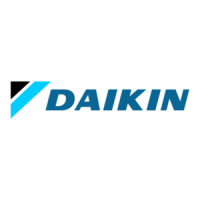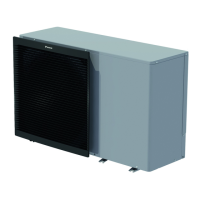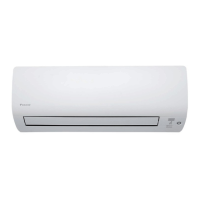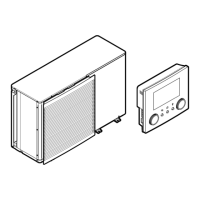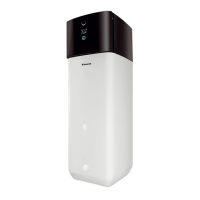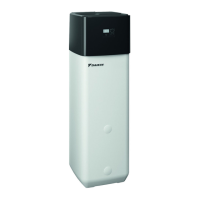Outdoor Unit EDUS121131
286 Installation Manual
Outdoor Unit
Wall
If no flare cap is
available, cover
the flare mouth
with tape to keep
dirt or water out.
Be sure to
place a cap.
Rain
Gas pipe
Liquid pipe
Gas pipe
insulation
Liquid pipe
insulation
Finishing tape
Drain hose
Inter-unit wiring
(Cut exactly at
right angles.)
Remove burrs
Check
Flare’s inner
surface must
be flaw-free.
The pipe end must
be evenly flared in
a perfect circle.
Make sure that the
flare nut is fitted.
7. Flaring the Pipe End
1) Cut the pipe end with a pipe cutter.
2)
Remove burrs with the cut surface facing
downward so that the chips do not enter the pipe.
3) Put the flare nut on the pipe.
4) Flare the pipe.
5) Check that the flaring is properly made.
Outdoor unit capacity class
Total length of piping for all rooms
2MXS18
98.4 ft
5. Charging with Refrigerant
● If the total length of piping for all rooms exceeds the figure listed below, additionally charge with 0.22 oz/ft of
refrigerant (R410A) for each additional feet of piping.
6. Refrigerant Piping Work
6-1 Cautions on pipe handling
1) Protect the open end of the pipe against dust and moisture.
2) All pipe bends should be as gentle as possible. Use a pipe bender for
bending.
6-2 Selection of copper and heat insulation materials
When using commercial copper pipes and fittings, observe the following:
1) Insulation material: Polyethylene foam
Heat transfer rate: 0.041 to 0.052W/mK (0.024 to 0.030 Btu/fth°F)
Refrigerant gas pipe’s surface temperature reaches 230°F max.
Choose heat insulation materials that will withstand this temperature.
2) Be sure to insulate both the gas and liquid piping and to provide insulation dimensions as below.
● Use separate thermal insulation pipes for gas and liquid refrigerant pipes.
Even though the stop valve is fully closed, the refrigerant may slowly leak out; do not leave the flare nut removed for
a long period of time.
CAUTION
4. Purging Air and Checking Gas Leakage
● When piping work is completed, it is necessary to purge the air and check for gas leakage.
Refer to “Purging Air and Checking Gas Leakage”.
1) Do not use mineral oil on flared part.
2) Prevent mineral oil from getting into the system as this would reduce the unit life.
3)
Never use piping which has been used for previous installations. Only use parts which are provided with the unit.
4) Do never install a refrigerant drier to this unit.
5) The drying material may dissolve and damage the system.
6) Incomplete or improper flaring may cause refrigerant gas leakage.
Set exactly at the position shown below.
A
Flaring
Die
A 0~0.020”
Clutch-type
Flare tool for R410A
0.039~0.059”
Clutch-type (Rigid-type)
0.059~0.079”
Wing-nut type (Imperial-type)
Conventional flare tool
WARNING
Gas pipe
Liquid pipe
O.D.: 3/8”, 1/2” / Thickness:0.031” (C1220T-O)
O.D.: 5/8” / Thickness:0.039” (C1220T-O)
O.D.: 1/4” / Thickness:0.031” (C1220T-O)
Gas pipe insulation
Liquid pipe insulation
I.D.: 0.472~0.590” / Thickness:0.511” min.
I.D.: 0.630~0.787” / Thickness:0.511” min.
I.D.: 0.315~0.393” / Thickness:0.393” min.
Minimum bend radius
O.D.: 3/8”, 1/4” / 1-3/16” or more
O.D.: 1/2” / 1-9/16” or more
O.D.: 5/8” / 1-15/16” or more
Be sure to use insulation that is designed for use with HVAC Systems.
Be sure to use insulation that is designed for use with HVAC Systems.
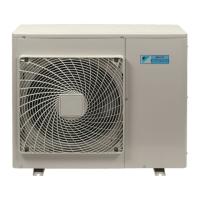
